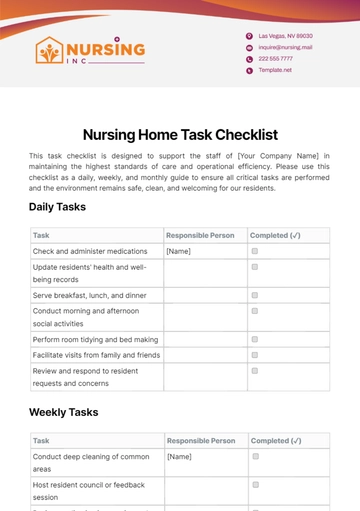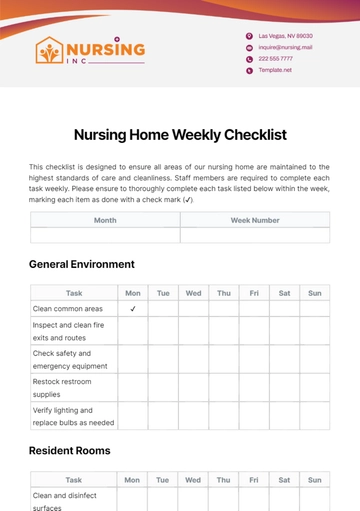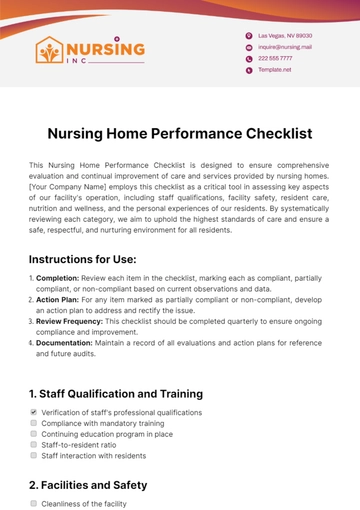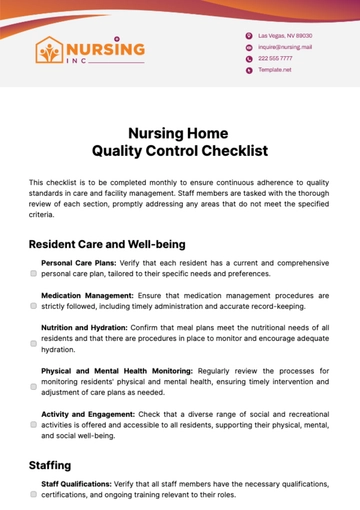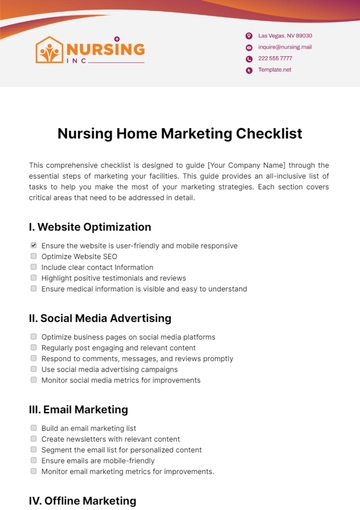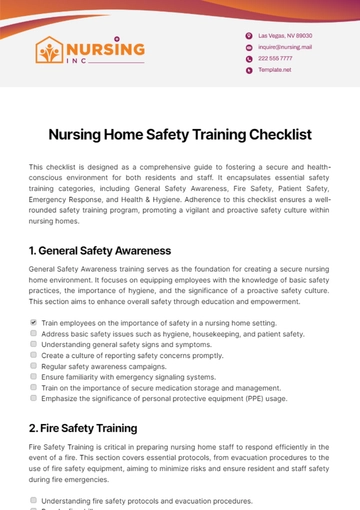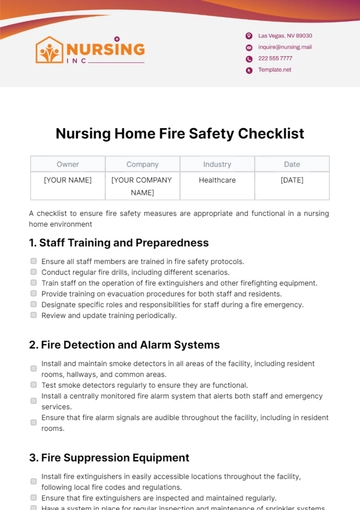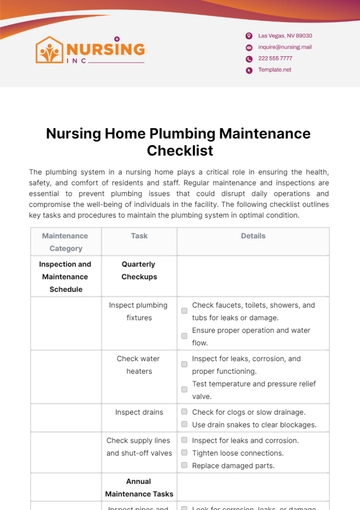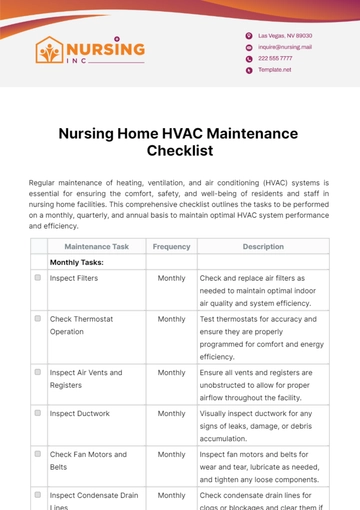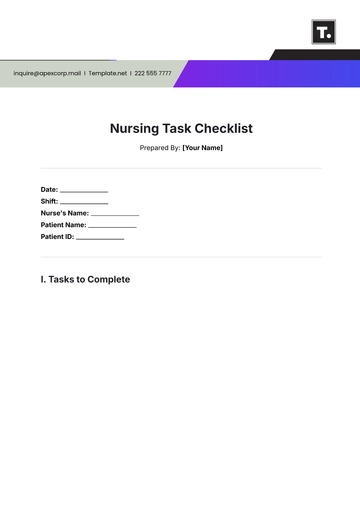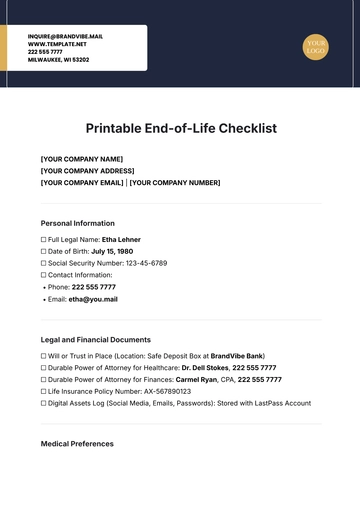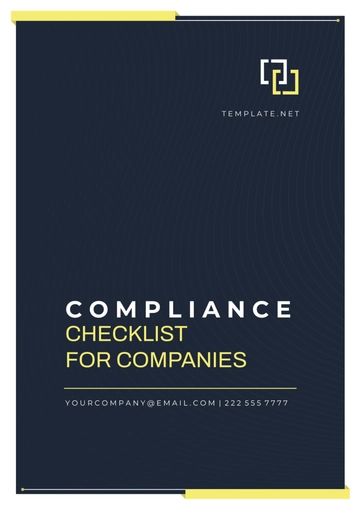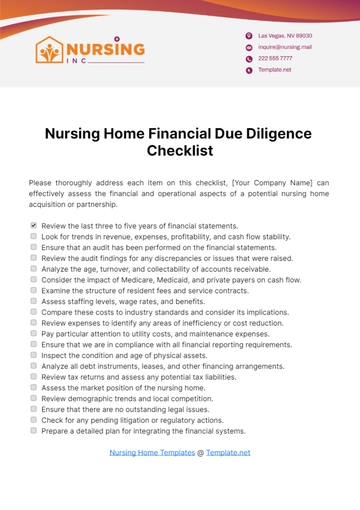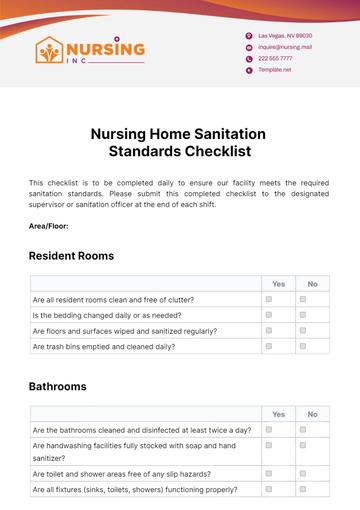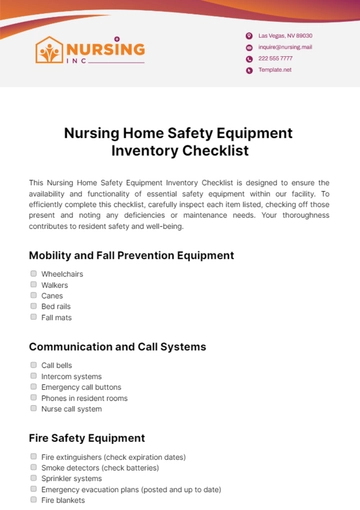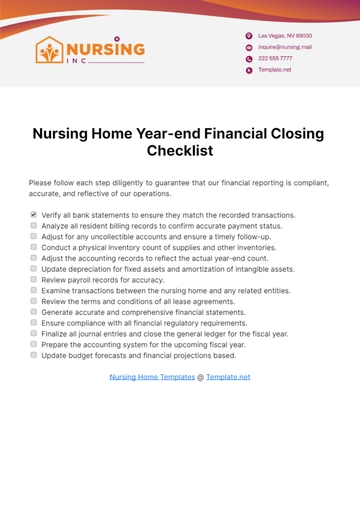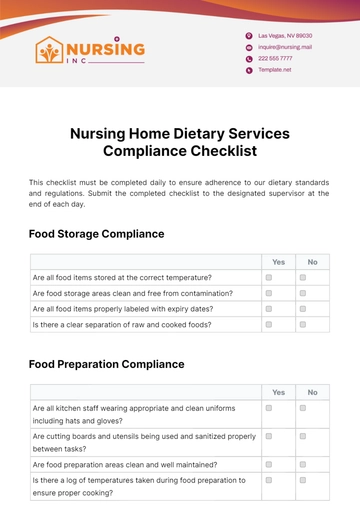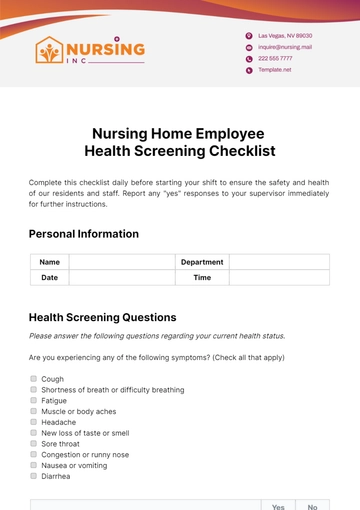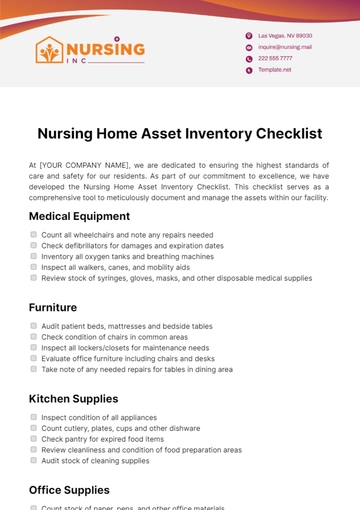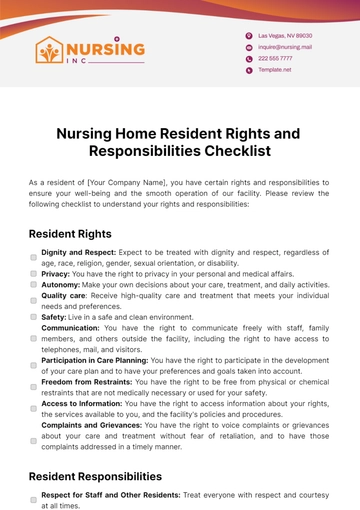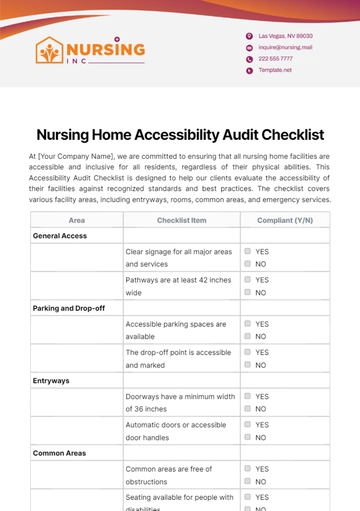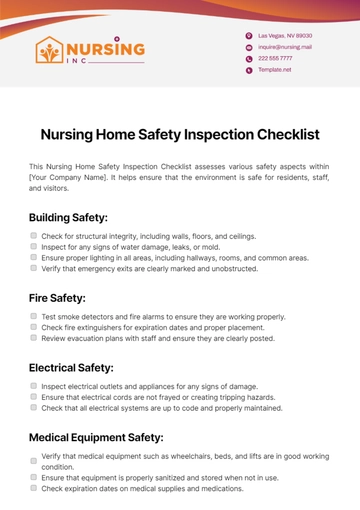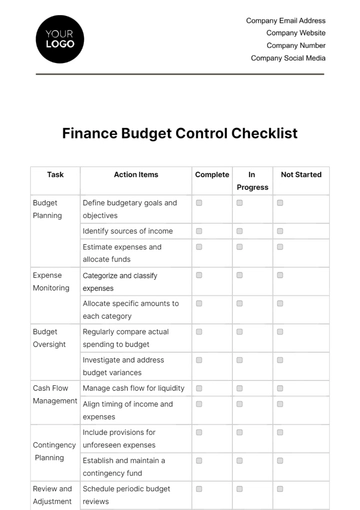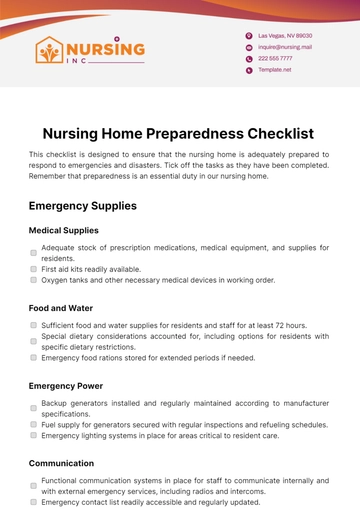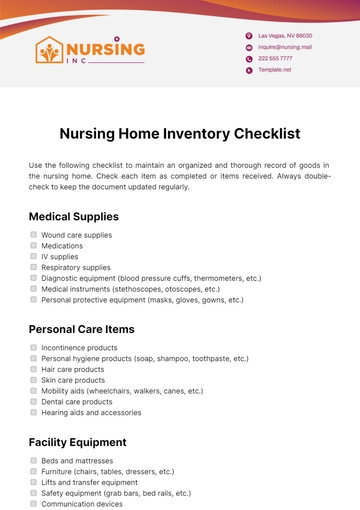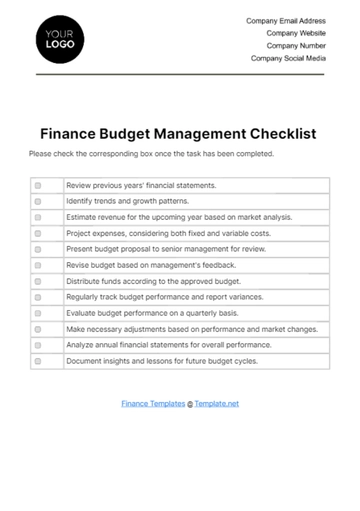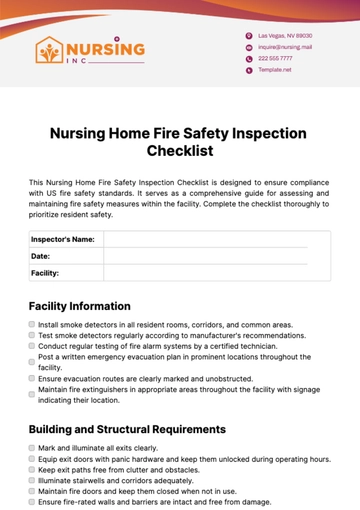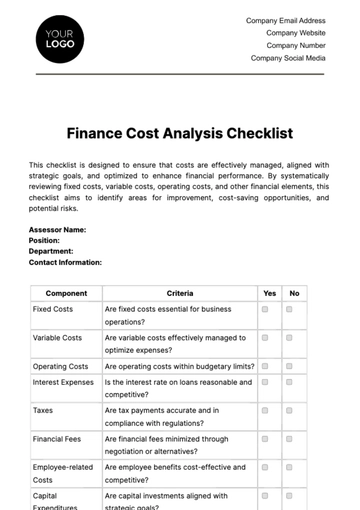Free Nursing Home Emergency Preparedness Checklist
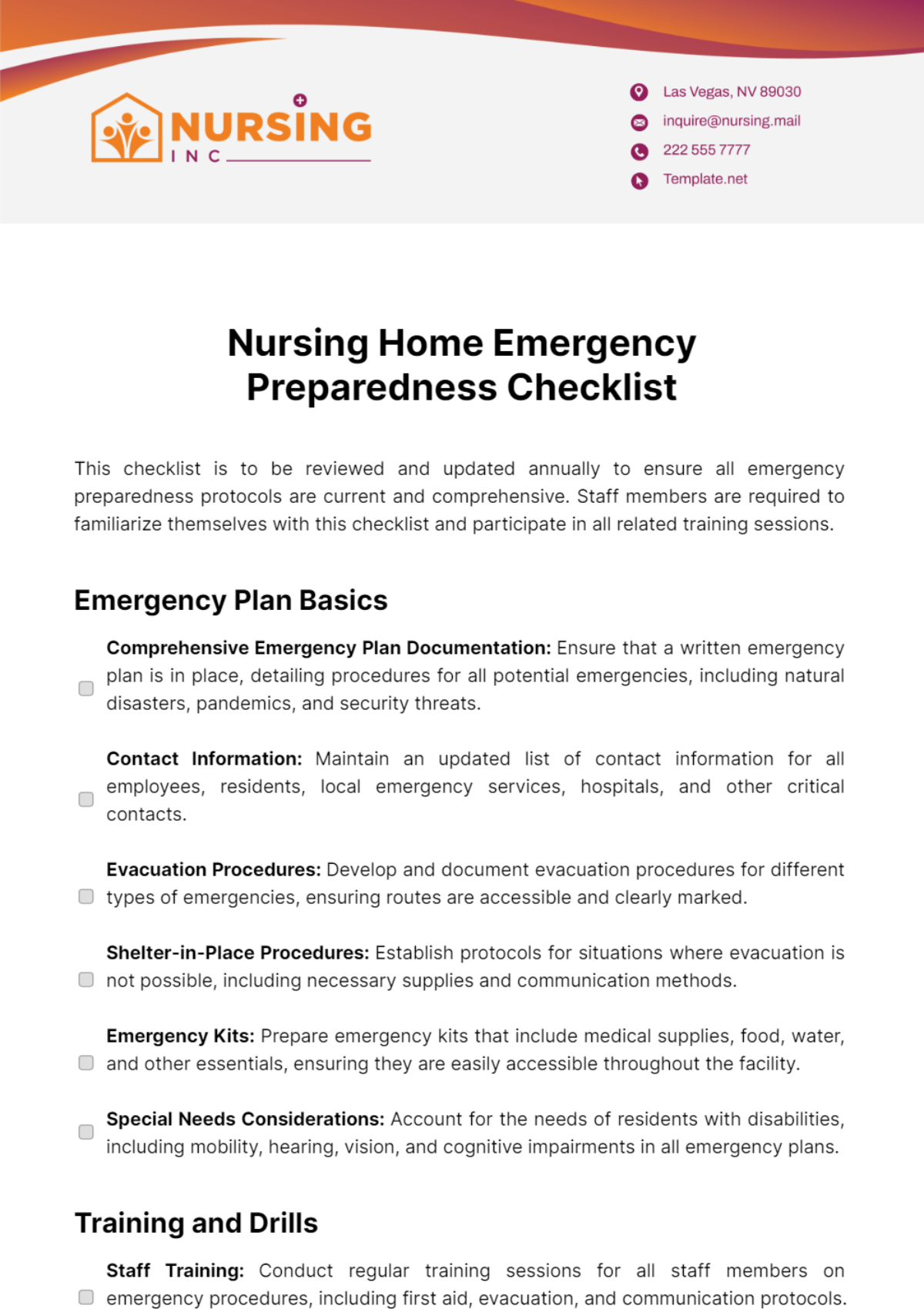
Preparedness Checklist
This checklist is to be reviewed and updated annually to ensure all emergency preparedness protocols are current and comprehensive. Staff members are required to familiarize themselves with this checklist and participate in all related training sessions.
Emergency Plan Basics
Comprehensive Emergency Plan Documentation: Ensure that a written emergency plan is in place, detailing procedures for all potential emergencies, including natural disasters, pandemics, and security threats.
Contact Information: Maintain an updated list of contact information for all employees, residents, local emergency services, hospitals, and other critical contacts.
Evacuation Procedures: Develop and document evacuation procedures for different types of emergencies, ensuring routes are accessible and clearly marked.
Shelter-in-Place Procedures: Establish protocols for situations where evacuation is not possible, including necessary supplies and communication methods.
Emergency Kits: Prepare emergency kits that include medical supplies, food, water, and other essentials, ensuring they are easily accessible throughout the facility.
Special Needs Considerations: Account for the needs of residents with disabilities, including mobility, hearing, vision, and cognitive impairments in all emergency plans.
Training and Drills
Staff Training: Conduct regular training sessions for all staff members on emergency procedures, including first aid, evacuation, and communication protocols.
Resident Preparedness: Educate residents on emergency plans, encouraging them to participate in drills and understand their role in an emergency.
Emergency Drills: Schedule regular emergency drills for different scenarios, evaluating and refining procedures based on feedback and observations.
Communication Training: Train staff in the use of communication tools and protocols to ensure effective communication during an emergency.
Communication Plan
Emergency Communication System: Implement a reliable system for communicating with staff, residents, and emergency services during an emergency.
Family Communication Plan: Establish a procedure for notifying residents' families in the event of an emergency, including regular updates as the situation evolves.
Media Relations: Designate a spokesperson to handle media inquiries during an emergency, ensuring accurate and consistent information is provided.
Collaboration with Local Services
Emergency Services Coordination: Foster relationships with local emergency services to ensure a coordinated response in the event of an emergency.
Community Resources: Identify and collaborate with community resources that can provide additional support during an emergency, such as local shelters and food banks.
Mutual Aid Agreements: Establish mutual aid agreements with other nursing homes and healthcare facilities for resource sharing during widespread emergencies.
Review and Improvement
After-Action Reviews: Following an emergency or drill, conduct a thorough review of the response, identifying strengths and areas for improvement.
Update Emergency Plan: Regularly update the emergency plan to reflect changes in regulations, facility layout, resident needs, and lessons learned from drills and actual emergencies.
Continuous Training: Ensure ongoing training and education for staff on the latest emergency preparedness practices and innovations.
- 100% Customizable, free editor
- Access 1 Million+ Templates, photo’s & graphics
- Download or share as a template
- Click and replace photos, graphics, text, backgrounds
- Resize, crop, AI write & more
- Access advanced editor
Ensure readiness for any situation with the Nursing Home Emergency Preparedness Checklist Template from Template.net. This essential tool is fully editable and customizable, designed to address the unique emergency preparedness needs of nursing homes. Adapt it easily to your specifications in our AI Editor tool, guaranteeing comprehensive preparation for any emergency scenario.
You may also like
- Cleaning Checklist
- Daily Checklist
- Travel Checklist
- Self Care Checklist
- Risk Assessment Checklist
- Onboarding Checklist
- Quality Checklist
- Compliance Checklist
- Audit Checklist
- Registry Checklist
- HR Checklist
- Restaurant Checklist
- Checklist Layout
- Creative Checklist
- Sales Checklist
- Construction Checklist
- Task Checklist
- Professional Checklist
- Hotel Checklist
- Employee Checklist
- Moving Checklist
- Marketing Checklist
- Accounting Checklist
- Camping Checklist
- Packing Checklist
- Real Estate Checklist
- Cleaning Checklist Service
- New Employee Checklist
- Food Checklist
- Home Inspection Checklist
- Advertising Checklist
- Event Checklist
- SEO Checklist
- Assessment Checklist
- Inspection Checklist
- Baby Registry Checklist
- Induction Checklist
- Employee Training Checklist
- Medical Checklist
- Safety Checklist
- Site Checklist
- Job Checklist
- Service Checklist
- Nanny Checklist
- Building Checklist
- Work Checklist
- Office Checklist
- Training Checklist
- Website Checklist
- IT and Software Checklist
- Performance Checklist
- Project Checklist
- Startup Checklist
- Education Checklist
- Home Checklist
- School Checklist
- Maintenance Checklist
- Planning Checklist
- Manager Checklist
- Wedding Checklist
- Vehicle Checklist
- Travel Agency Checklist
- Vehicle Inspection Checklist
- Interior Design Checklist
- Backpacking Checklist
- Business Checklist
- Legal Checklist
- Nursing Home Checklist
- Weekly Checklist
- Recruitment Checklist
- Salon Checklist
- Baby Checklist
- Equipment Checklist
- Trade Show Checklist
- Party Checklist
- Hospital Bag Checklist
- Evaluation Checklist
- Agency Checklist
- First Apartment Checklist
- Hiring Checklist
- Opening Checklist
- Small Business Checklist
- Rental Checklist
- College Dorm Checklist
- New Puppy Checklist
- University Checklist
- Building Maintenance Checklist
- Work From Home Checklist
- Student Checklist
- Application Checklist
